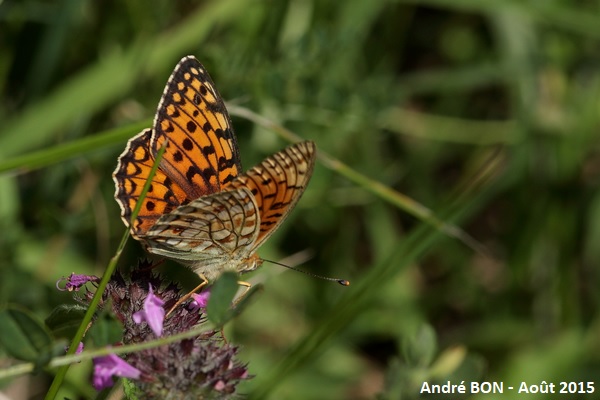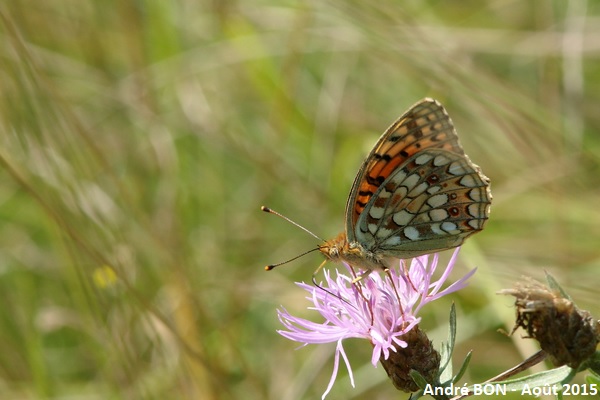

| Niobe Fritillary (Argynnis (Fabriciana) niobe (Linnaeus, 1758)) |


|
|
Scientific name: Argynnis (Fabriciana) niobe (Linnaeus, 1758) Common name: Niobe Fritillary Other names: The Fabriciana subgenus is sometimes considered as a separated genus, so you can sometimes find Fabriciana niobe as scientific name. French name: Chiffre, Nacré niobé. Order: Lepidoptera Suborder: Rhopalocera Family: Nymphalidae Subfamily: Argynninae Wingspan: 50-65 mm. Biotope: Flower meadows from plains up to 2000 metres in altitude. Clearings and road sides. Geographic area: Europe but missing in Great Britain and in northern Scandinavia, Asia Minor and temperate Asia east to Japan. Flight time: June-August. Number of generations : 1 Caterpillar: Orange yellow and black with an orange yellow dorsal stripe and whitish spines. Host plant: Violet (Viola) |
The Niobe Fritillary is a large butterfly. The upper side of the wings is bright orange brown with black marks. The shape of the outer edge of the forewing is straight or convex. This is a possible key to differentiate the Niobe Fritillary from the High Brown Fritillary (Argynnis adippe) whose fore wing's outer edge is slightly concave. It is almost impossible to differentiate the Niobe Fritillary from the Dark Green Fritillary (Argynnis aglaja) with only a view of the upper side of the wings. You can however get one information by a close look at the males' androconial stripes: 2 thin stripes on Argynnis niobe, 2 broad stripes on Argynnis adippe and 3 very thin stripes on Argynnis aglaja. The main way to identify these species is to have close look at the underside of the hindwing. The underside of the Niobe Fritillary's hind wing and High Brown Fritillary's hind wing shows one row of reddish post-discal spots, often better marked on the High Brown Fritillary. The centre shows two-tones cells, yellow and ochre, between the silvery cells, on the Niobe Fritillary. These cells are uniform yellow on the High Brown Fritillary. One very small pale rounded spot, close to the base of the wings, sometimes shows a black central spot on the Niobe Fritillary. This is never the case on the High Brown Fritillary. The black border of the silvery cells draw a continuous post-discal line on the Niobe Fritillary. These black borders are more diffuse on the High Brown Fritillary. The silvery cells are replaced by yellowish cells on the eris form. The Niobe Fritillary over winters as a larva inside the egg. |
| [To know more about the Niobe Fritillary] [Next picture] [Top] |

|
I have observed this butterfly during a nice trek around the Mont Aiguille in the Vercors mountains. |
| [To know more about the Niobe Fritillary] [Previous picture] [Top] |

|
I have been able to shoot a picture of the underside of the hind wing. There is no small black spot but the other keys to identify the Niobe Fritillary species are clearly visible. |